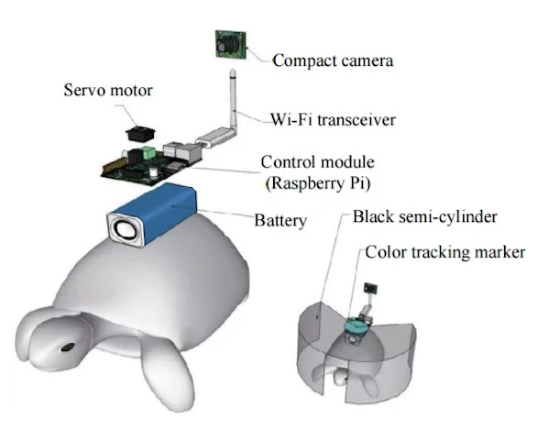
Written by Heather Hamilton, contributing writer
There’s now technology that can control an animal’s movement through human thought. Brain-computer interfaces (BCIs), while still in development, are gaining momentum as breakthroughs in electronics and computing allow technologies to utilize human thought to control machines, according to Science Daily.
Researchers from the Korea Advanced Institute of Science and Technology have discovered that by transferring information from computer to brain (CBI), a functional link between the brains of different species can be created — in this case, a human brain can dictate where a turtle moves. The full research is printed in the Journal of Bionic Engineering. While other research has attempted to control the movement of animals through invasive procedures, typically on insects, KAIST is proposing a conceptual system that will control the turtle’s instinctive escape behavior.
New Atlas reports that cockroaches are often used for similar experimentation because of their ability to sense air flow from special sensory organs in their backsides, warning them of potential predators. Signals to their antennae also steer them right and left. Locusts are used because researchers can attach patches to their sides, causing them to instinctively turn away from the sources.
Science Daily says that the researchers are working with a turtle because of their cognitive abilities and ability to distinguish different wavelengths of light. A turtle is able to see a white light source and recognize it as an open space, then making the decision to move toward it. A turtle will also move away and toward an obstacle in its environment predictably, making it an easier test subject.
Research was conducted by combining a head-mounted display with a BCI on the human researcher and a camera, Wi-Fi transceiver, computer control module, and battery on the upper shell of the turtle. The turtle also wears a stimulation device, which consists of semi-cylinder with a slit that can be turned plus or minus 36 degrees through the BCI, KAIST reports.
By receiving images from the turtle-mounted camera, the human operator decides where the turtle should move, providing thought commands recognized by the BCI system as electroencephalography signals. The BCI can identify left and right, which activate the stimulation device over Wi-Fi and obstructing the turtle’s view. This causes the turtle’s natural instinct to move toward light, changing its direction. Then the human receives updated visual feedback from the shell camera, continuing to control the turtle’s movement.
Researchers found that the setup worked on turtles in a variety of different environments, including indoors and outdoors, on gravel and grass. Turtles also navigated through shallow water and trees.
While the future of such technologies is largely unknown, Science Daily anticipates potential applications for military reconnaissance and surveillance.
Sources: KAIST, Science Daily, Journal of Bionic Engineering, New Atlas
Advertisement
Learn more about Electronic Products Magazine





